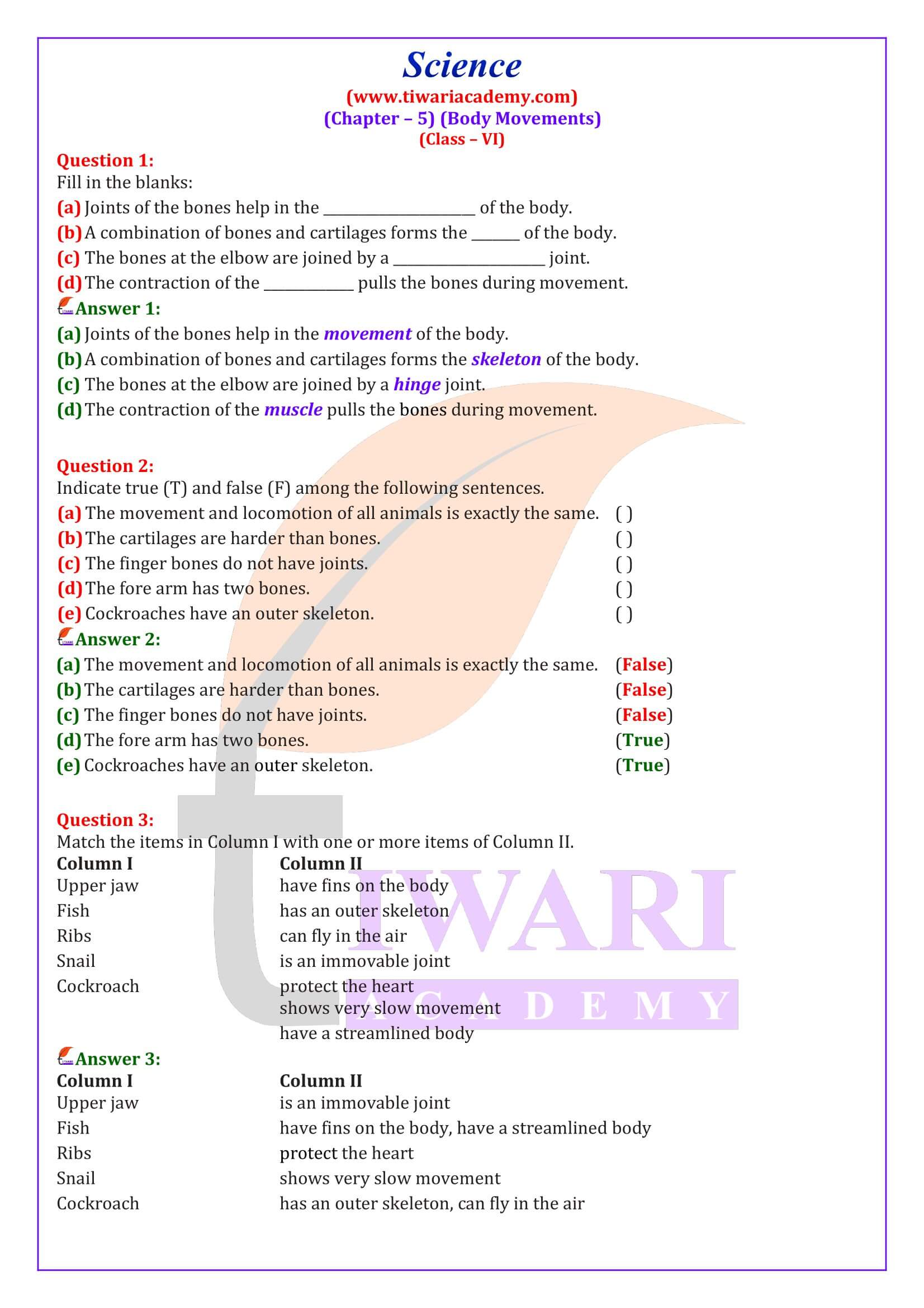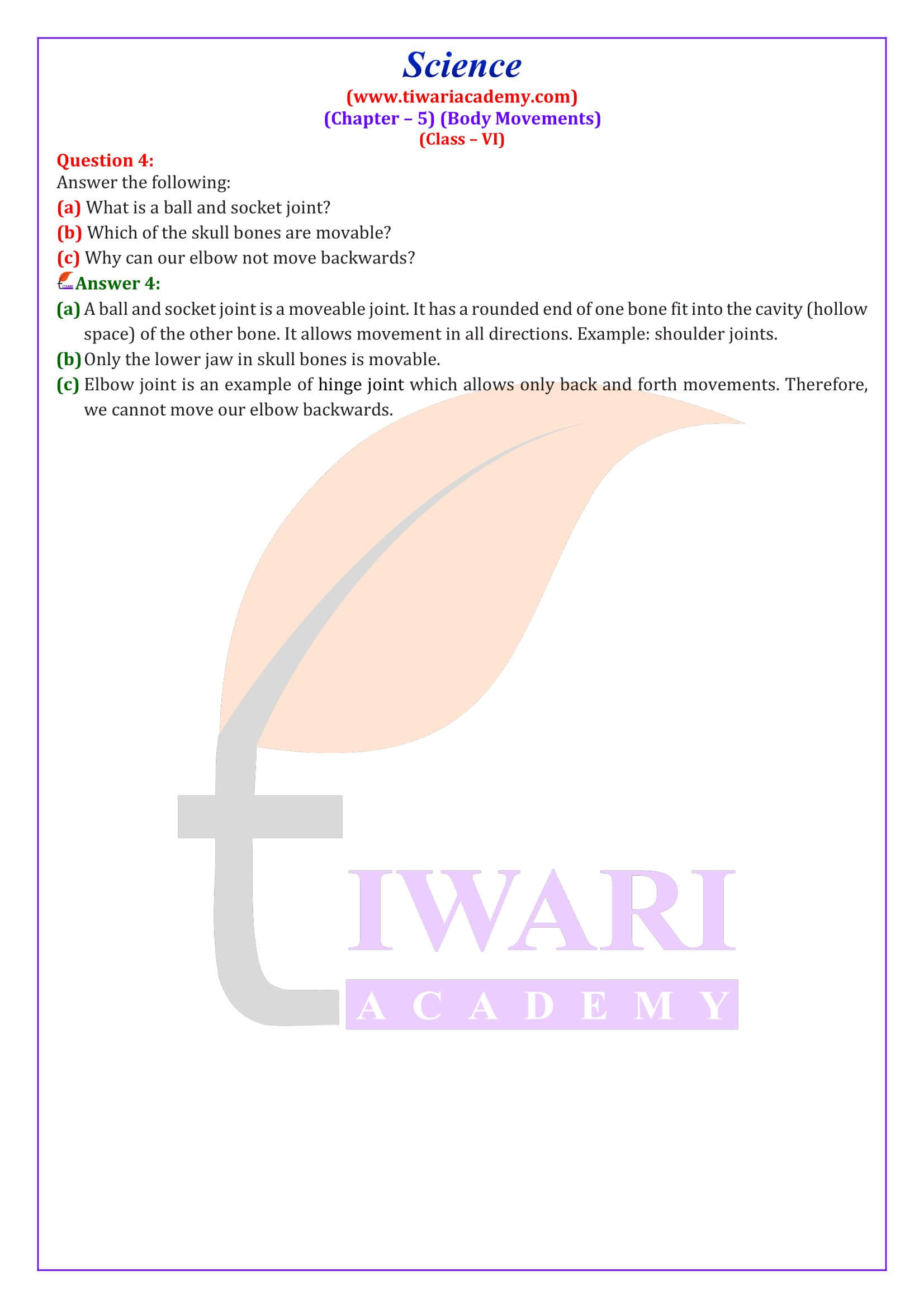NCERT Solutions for Class 6 Science Chapter 5 Body Movement in Hindi and English Medium updated for new session 2024-25. Get here the revised question answers and explanation of chapter 5 class 6th science based on rationalised syllabus and latest textbooks issued for academic year 2024-25.
| Class: 6 | Science |
| Chapter 5: | Body Movement |
| Content: | NCERT Exercise Solutions |
| Content Type: | Text and Videos Format |
| Academic Session: | CBSE 2024-25 |
| Medium: | Hindi and English Medium |
NCERT Solutions for Class 6 Science Chapter 5
Chapter 5 end exercises and key points are covered in Video Format based on NCERT Solutions and Offline Apps. Latest CBSE NCERT Books class 6 for new academic session are also available in PDF file format to download.
Important Questions on 6th Science Chapter 5 for Practice
1. Underwater divers wear fin-like flippers on their feet to
(a) swim easily in water.
(b) look like a fish.
(c) walk on water surface.
(d) walk over the bottom of the sea (sea bed).
2. Which of the following parts of our body help us in movement?
(i) Bones (ii) Skin (iii) Muscles (iv) Organs
Choose the correct answer from the option below.
(a) (i) and (iii) (b) (ii) and (iv) (c) (i) and (iv) (d) (iii) and (ii)
3. Snail moves with the help of its
(a) shell (b) bone (c) muscular foot (d) whole body
4. Which of the following joints is immovable?
(a) Shoulder and arm
(b) Knee and joint
(c) Upper jaw and skull
(d) Lower jaw and upper jaw
5. How many muscles work together to move a bone?
(a) One (b) Two (c) Three (d) Four
6. Which of the following organisms does not have both muscles and skeleton for movement?
(a) dog (b) snail (c) earthworm (d) human being
7. Write the type of joint which is used for each of the following movements:
(a) A cricket bowler bowls the ball.
(b) A girl moves her head in right and left direction.
(c) A person lifts weights to build up his biceps.
8. Boojho fell off a tree and hurt his ankle. On examination the doctor confirmed that the ankle was fractured. How was it detected?
9. How is the skeleton of a bird well-suited for flying?
10. Which type of movement would have been possible if
(a) our elbow had a fixed joint.
(b) we were to have a ball and socket joint between our neck and head.
Answers of Important Questions
Important Questions on Class 6 Science Chapter 5
Fill in the blank: Joints of the bones help in the _________ of the body.
Joints of the bones help in the movement of the body.
Fill in the blank: A combination of bones and cartilages forms the _______ of the body.
A combination of bones and cartilages forms the skeleton of the body.
Which of the skull bones are movable?
Only the lower jaw in skull bones is movable.
Why can our elbow not move backwards?
Elbow joint is an example of hinge joint which allows only back and forth movements. Therefore, we cannot move our elbow backwards.
1 (a)
2 (a)
3 (c)
4 (c)
5 (b)
6 (c)
7. (a) Ball and Socket joint, (b) Pivotal joint, (c) Hinge joint
8. The doctor must have observed a swelling and taken an X-ray of the ankle. X-ray images confirm injuries/fractures in bones.
9.
Bones are hollow and light.
Bones of hind limbs are for walking and perching.
Bones of fore limbs are modified as wings.
Shoulder bones are strong.
Breast bones hold flight muscles and are used to move the wings up and down.
10. (a) We would not be able to bend/fold our arms.
(b) We would be able to rotate our head 360°.






